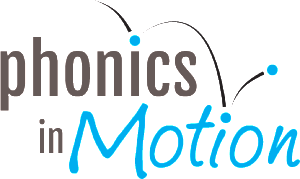How To Develop Writing Skills In A Five-Year-Old
While many people believe that handwriting is simply a skill that children naturally learn, they are mistaken. Handwriting is actually a learned skill that requires a ton of practice and repetition in order for it to become second nature. Developing handwriting skills is an important part of lifelong educational success for children. The earlier they start good handwriting habits, the easier it will be for them to learn to write correctly.
To develop writing skills in a five year old, keep it fun, use multisensory teaching methods, always model handwriting skills, and develop a strategic handwriting routine.
Why Is Handwriting Important?
Handwriting is an important skill for kids to learn. It’s not just about being able to write letters and words, but being able to write with legibility, accuracy, and fluency. This skill is a precursor to other cognitive skills like reading and math. From the moment they start to scribble on paper, it is a way of communicating and expressing themselves.
Handwriting helps develop cognitive skills such as memory, concentration, and critical thinking, which are necessary for learning more advanced skills like math and science.
Handwriting also teaches children about shapes, sizes, and proportions — concepts that are essential for the development of math skills later on in life. Children who learn to write at an early age tend to have better spatial reasoning skills than those who learn later on in life.
Some kids are naturally good at drawing or painting, but others may need practice.
Handwriting is similar in that some kids can easily form letters while others need practice. It’s a skill that requires practice just like any other skill — like learning a sport or an instrument — so don’t worry if your child struggles with writing at first. It takes time!
Are Five-Year-Olds Supposed to Write?
When children learn how to write well at an early age, it sets them up as lifelong learners who are able to read more easily than if they were taught later in life. But when should you start making a focused effort on teaching them?
Preschool kids develop pre-writing skills through everyday activities. This could be painting, drawing, stories, playing with clay, or tracing letters in the air. Since children learn best through fun and play, they absorb literacy skills without even knowing they are learning.
At the age of 5 or 6, most children have developed enough fine motor skills (the ability to use their fingers and hands) so that they can hold a pencil or pen and make marks on paper. This means that they can begin learning how to form letters properly.
How To Encourage Writing In Early Years
To encourage writing in the early years, it is necessary to connect handwriting with other literacy skills and use authentic learning experiences to teach writing.
Connect Writing With Other Literacy Skills
Connecting handwriting to all of the pillars of literacy is the best way to help kids connect the dots. The pillars of literacy include phonics, phonemic awareness, reading comprehension, vocabulary, and reading fluency. By teaching all aspects of literacy together, kids develop important writing skills right off the bat.
For example, if you teach “S says /s/” while writing the letter, you are teaching letter identification, phonemic awareness, and directionality all at once. Directionality is an important part of learning to form letters correctly, so when they try to practice, they already have a head start.
Use Authentic Learning Experience To Teach Writing
Children learn best through experiences. They learn with their whole bodies, and simply sitting down practicing letters doesn’t cut it. In order for kids to learn literacy skills, including handwriting, it is so important to make it a multisensory experience. By fitting literacy instruction into everyday experiences, kids are continuously exposed to information and absorb it like a sponge.
How do you do that? The answer is simple. Make the subject matter relate to their interests and play a part in their everyday lives. Weave writing into play to make it a natural learning opportunity. For example, if you are playing with dinosaurs, write the name of each dinosaur. Or, if you are packing for a camping trip, get them to help write a packing list.
How To Develop Writing Skills In A Five Year Old
Kids learn through experiences, and it is so important to make learning to read engaging and captivating.
To develop writing skills in a five year old, keep it fun, use multisensory teaching techniques, model first, and develop a strategic handwriting routine.
Keep It Fun
Kids learn best when they are having fun! As an adult, you’ll probably agree that there is nothing worse than having to do work you find boring or unengaging. You want your child to associate writing with something enjoyable, not something that causes stress or anxiety. By keeping handwriting instruction fun and high energy, kids stay engaged and learn rapidly.
Use a variety of materials such as chalkboards, paper, crayons, markers, and pens. Play games, sing songs, and draw funny pictures as a way to reinforce language concepts that lead to great handwriting skills.
Multisensory Teaching
Multisensory learning is a great way to develop writing skills in kids. Multisensory learning is the use of more than one of the senses to learn something. This helps kids process information better and remember it longer.
It’s all about making connections between different areas of the brain. When we use multiple senses, we’re able to engage more parts of our brains — including those linked with language, logic, and creativity. This helps us make better connections between new information and what we already know.
Multisensory activities are also great for building confidence and self-esteem because they encourage success right away rather than waiting until everything has been memorized perfectly before moving on to something harder.
For children with learning challenges, multisensory learning can be especially beneficial because it helps them process information more effectively. Try acting out a story, making letters using whole-body motions, or writing letters in the air!
Model First
Explicit instruction is a powerful strategy that can be used to teach literacy skills to young children. With explicit instruction, you teach your child the rules of writing while they observe you doing it.
For example, if you are teaching them how to write the letter “b,” show them the letter “b” several times in different ways (such as using a pencil or marker), then ask them to try it themselves.
Once your child has learned how to form letters correctly through explicit instruction and modeling, encourage him or her to practice writing those letters over and over again until they become second nature.
This will help reinforce what he or she has learned from explicit instruction so that he or she will begin automatically forming letters correctly without having to think about what shape each letter should take on paper. This is called the gradual release of responsibility.
Develop a Strategic Handwriting Routine
If you want your child to become an effective writer, it is important that he or she has the opportunity to practice their writing skills on a regular basis. By developing a routine, you will ensure that your child receives plenty of practice with his or her handwriting while also helping them improve their fine motor skills and hand-eye coordination.
A routine also gives kids a sense of accomplishment as well as improved self-esteem as they develop confidence in their abilities as writers.
How Phonics in Motion Helps Develop Writing Skills
Reading & Writing Monster
The Reading & Writing Monster is one of Phonics in Motion’s most beloved characters, and it is the main component of teaching handwriting. It always stays on the left-hand side of the page, giving kids a concrete reference to practice moving left to write on the page.
Kids “run away” from the Monster, always moving from left to the right, and practice directionality in a fun, high-energy, and engaging way.
Handwriting Stories
Phonics in Motion uses handwriting stories to keep kids engaged and laughing as they learn proper letter formation. By telling a story and acting it out, kids are more likely to recall information when working independently.
Handwriting stories are designed to develop proper stroking, letter formation, letter ID, and directionality related to the Monster’s location on the left. Each story turns letters into characters that children can relate to, leaving a lasting impression that brings language to life!
Conclusion
Kids need to be kids, and that includes when learning how to read and write. By teaching them important literacy skills in a way that honors their high-energy spirit, you instill a love of learning that leads to lifelong educational success.







